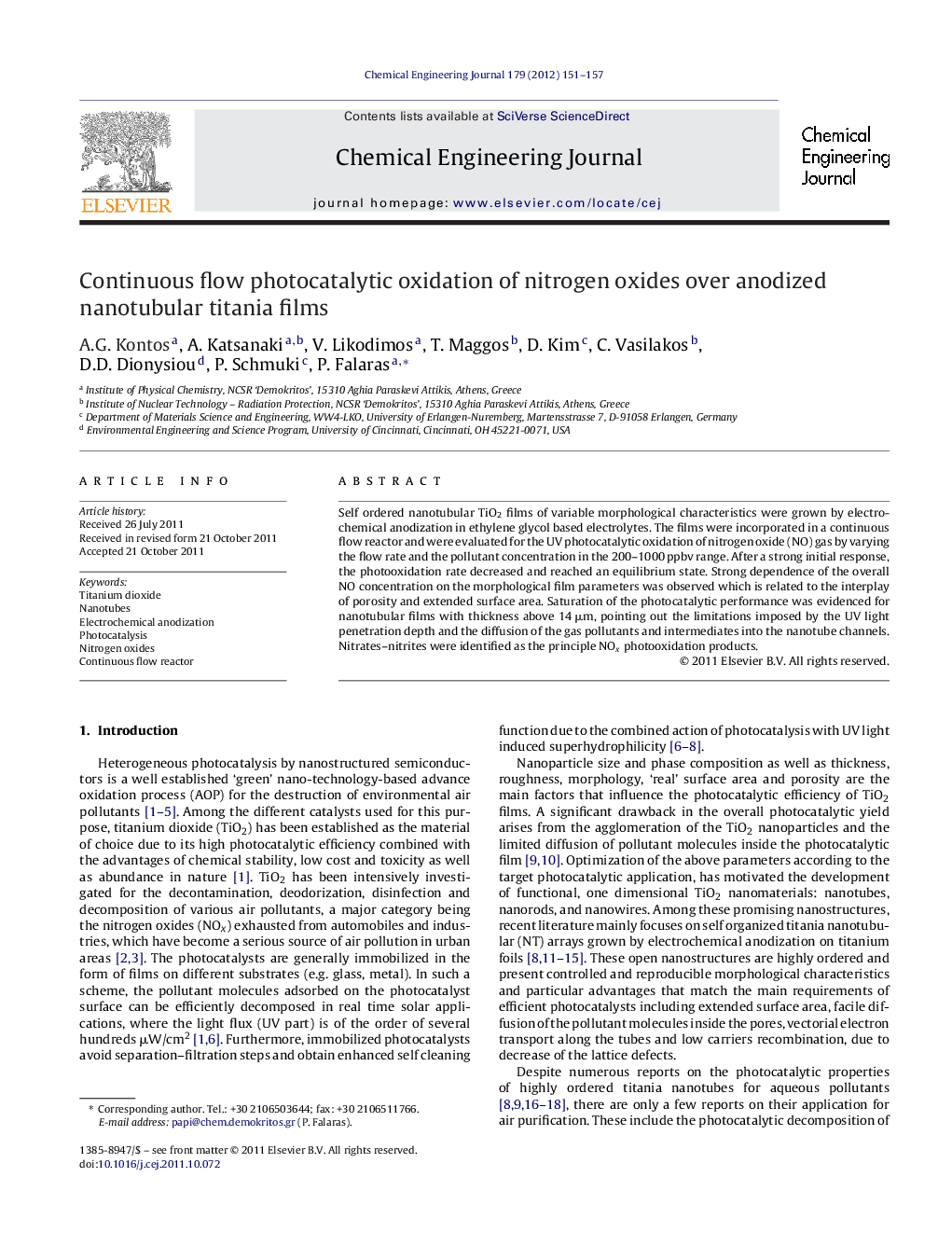| Article ID | Journal | Published Year | Pages | File Type |
|---|---|---|---|---|
| 150407 | Chemical Engineering Journal | 2012 | 7 Pages |
Self ordered nanotubular TiO2 films of variable morphological characteristics were grown by electrochemical anodization in ethylene glycol based electrolytes. The films were incorporated in a continuous flow reactor and were evaluated for the UV photocatalytic oxidation of nitrogen oxide (NO) gas by varying the flow rate and the pollutant concentration in the 200–1000 ppbv range. After a strong initial response, the photooxidation rate decreased and reached an equilibrium state. Strong dependence of the overall NO concentration on the morphological film parameters was observed which is related to the interplay of porosity and extended surface area. Saturation of the photocatalytic performance was evidenced for nanotubular films with thickness above 14 μm, pointing out the limitations imposed by the UV light penetration depth and the diffusion of the gas pollutants and intermediates into the nanotube channels. Nitrates–nitrites were identified as the principle NOx photooxidation products.
Graphical abstractFigure optionsDownload full-size imageDownload as PowerPoint slideHighlights► Self ordered nanotubular TiO2 films were grown by electrochemical anodization. ► NT films are optimized in thickness, porosity and extended surface area. ► UV photocatalytic oxidation of NO (200–1000 ppb) is studied. ► Photocatalytic performance reaches a maximum for film thickness above 14 μm.
